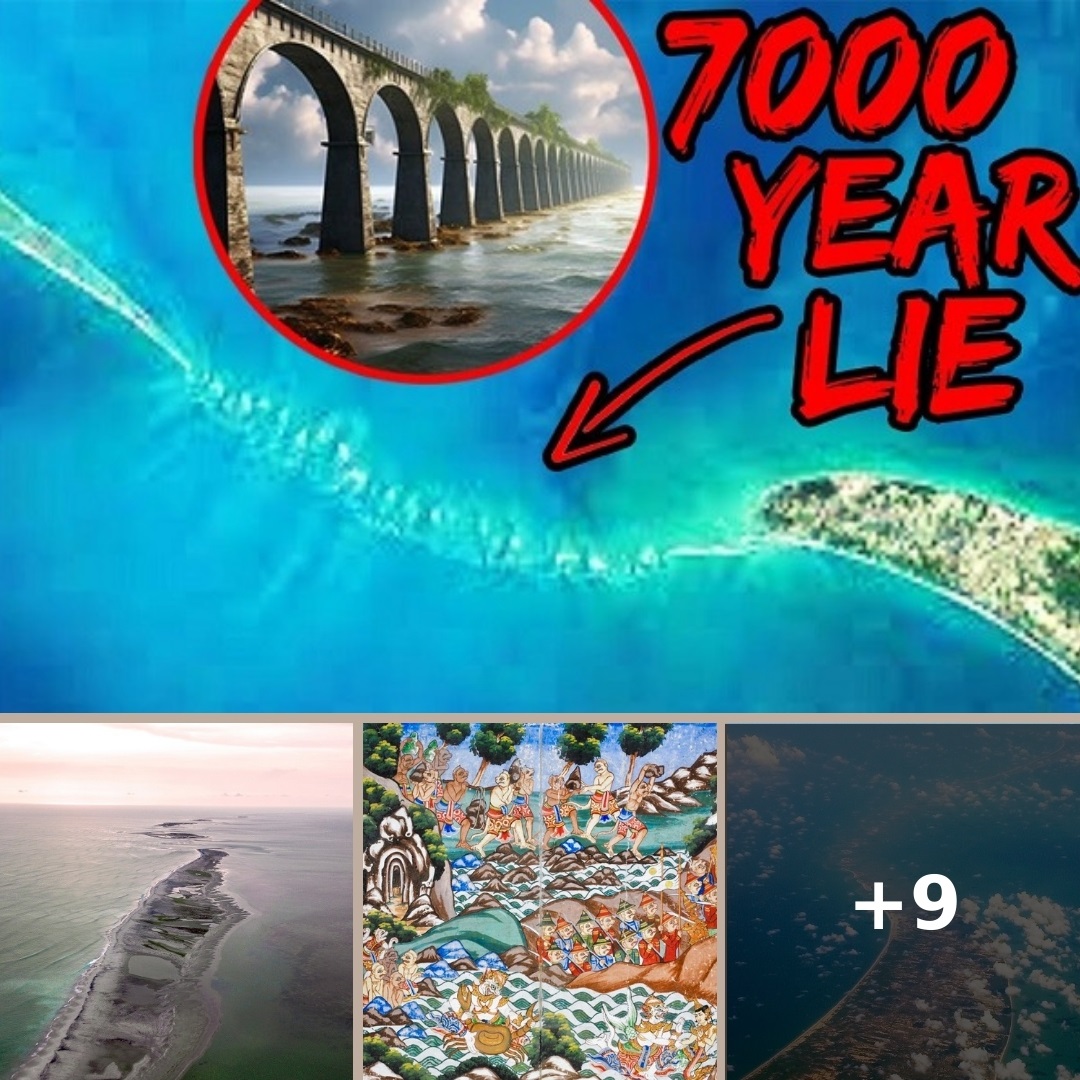The Adam’s Bridge was once walkable in the 15th century, but in latter years, the entire channel gradually sank deeper into the ocean.
Hindus regard Ram Setu, also known as Adam’s Bridge, as a holy site. It is a supposed land bridge that connects Sri Lanka and the Indian subcontinent, which is mentioned in Hindu mythology and early Islamic texts.
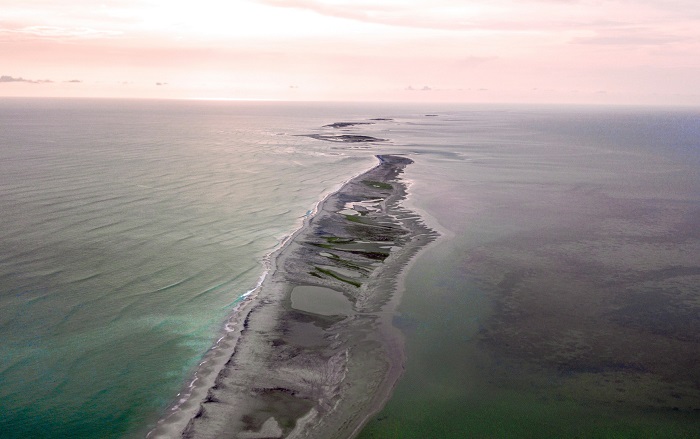
It’s interesting to note that this bridge was once walkable in the 15th century, but as time and storms progressed, the passageway became somewhat more profound, and the entire channel sank deeper into the ocean.
Geological evidence does indicate that this bridge was once a land connection between Sri Lanka and India. Regarding whether it is “natural” or “man-made,” there are some differences of opinion among experts.
We’ll examine both sides’ arguments and leave readers with a provocative question.
Ram Setu in Hindu mythology
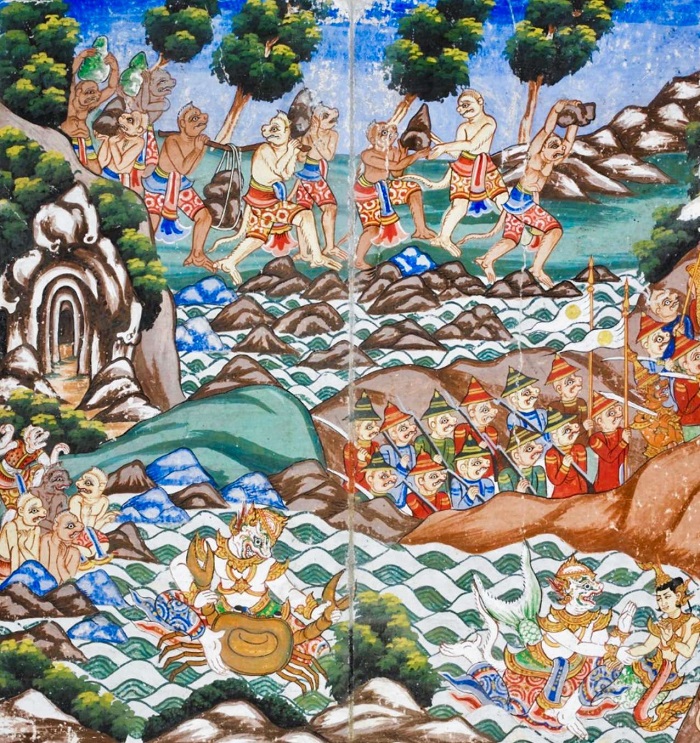
According to Hindu mythology’s Ramayana book, Lord Rama, the supreme being, ordered the building of this bridge in order to vanquish the wicked Demon King Ravana. The evil king imprisoned Sita in his impregnable island stronghold of Lanka (after which Sri Lanka was named), which was unassailable from across the sea.
Rama was assisted in building a massive land bridge that led to the fortress where Sita was being held by his army of monkeys and mythical forest creatures devoted to their king. Varana, the ape-like creatures, then assisted Rama in capturing the fortress and killing Ravana.
Today’s experts estimate that this bridge is at most 125,000 years old. This age obviously differs from the age of the bridge referenced in the Ramayana, despite being outside the purview of geology.
Only historical evidence allows us to confirm this. Some people contend that Ram Setu is the only historical and archaeological example of the Ramayana. The construction’s finer points in the epic can be connected to certain scientific theories. Nevertheless, it is challenging to accept everything from a mythological standpoint.
Adam’s Bridge in Islamic texts
The name Adam’s Bridge, as it appears on the British map, is taken from Islamic texts that make reference to the creation story of Adam and Eve. According to these writings, Adam was cast out of paradise and fell to earth on Sri Lanka’s Adam’s Peak. He then travelled to India from there.
What is Ram Setu’s scientific justification?
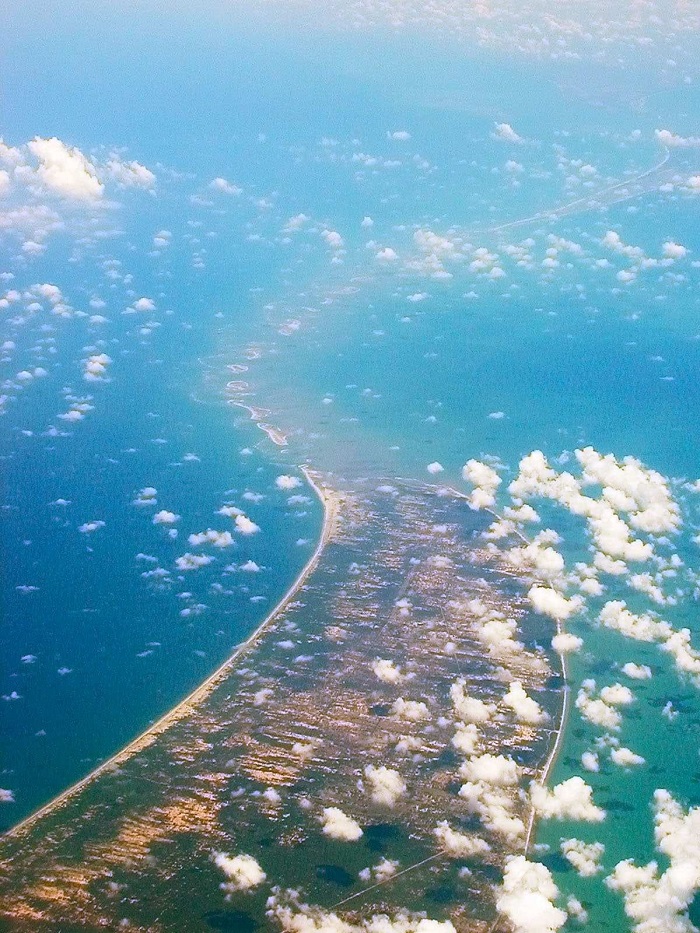
Scientists have now identified the stones used in Ram Setu Bridge after a long period of research. According to science, some unique stone types known as “Pumice” stones were used to construct the Ram Setu bridge. These stones were actually formed from volcanic lava. Lava heat changes into various particles when it comes into contact with the atmosphere’s cooler air or water.
These granules frequently coalesce to form a large stone. According to scientists, the air balance changes when the hot lava from a volcano meets the cool air in the atmosphere.
What do sceptic scientists say about the pumice stone hypothesis?
Let’s start with the scientific fact that silica would appear to be stone-like if the air were trapped within it, but it would actually be very light and float. A good example is “Pumice” stones. When lava spews from a volcano, the foam becomes hardened and becomes pumice. A volcano’s interior can reach temperatures of 1600 °C and is under intense pressure.
The cool air or sea water is what the lava encounters as it exits the volcano. Then bubbles of the water and air that were mixed with the lava emerge. The bubbles inside it freeze as a result of temperature differences. As a result of having less weight, it floats.
Stones that are dense don’t float in water. Pumice, however, is less dense than water because it contains a lot of air bubbles. It will, therefore, initially float. However, water will eventually enter the bubbles, expelling the air. The pumice sinks gradually. Additionally, this explains why the Ram Setu is currently underwater,
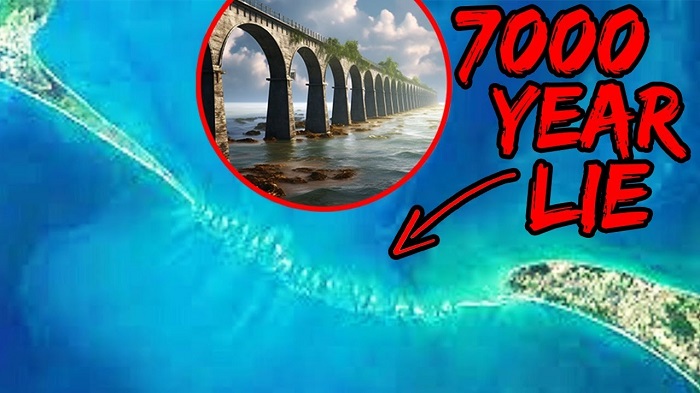
Pumice theory can be tackled for the following 3 reasons:
Even after 7000 years, Ram Setu stones can still be seen floating, whereas pumice doesn’t float indefinitely.
Rameshwaram is not even close to a single volcano from which the Vanara Army could have retrieved the pumice stones.
Some of the Rameshwaram floating stones do not have the same chemical composition as pumice rocks and do not weigh as little as pumice rocks. The floating stones in Rameswaram are mainly black, whereas the pumice rocks are white or cream in colour. (Observations from an experiment)
The aforementioned perfectly rational arguments somewhat refute the Pumice Stone theory.
What is the scientific basis for Ram Setu, if not pumice stones?
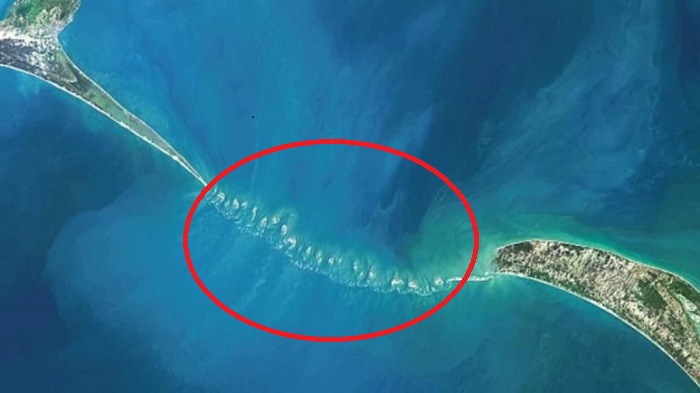
There are numerous other theories, but they are all flawed and have numerous drawbacks. As of right now, no Ram Setu theory can be accepted as complete, but research is ongoing.
Hindus and numerous organisations opposed the government-initiated Setu Samudram Project, which called for the destruction of Ram Setu. The project was halted by the court. However, the government recently put forth a suggestion for how to do it without destroying the bridge.
“The 48 km long bridge was wholly above sea level until it broken in a cyclone in 1480.” — Rameshwaram temple records
Depending upon the weather, some portions of this causeway can rise completely above the waves, and the depth of the sea within that section doesn’t go beyond 3 feet (1 metre). It seems almost unbelievable that there is a bridge that can be crossed between the two land masses, especially with such a vast ocean on either side.
Final words
Who knows what novel insights regarding the bridge’s construction will be discovered in the future? The natural world may hold the key to explaining how the bridge came into being as our knowledge of the planet and its natural processes advances.
The Discovery Channel described it as a “superhuman achievement,” but for Hindus, it is an artificial structure that a god created. There is ample proof that in the recent geological past, there was, in fact, a land bridge connecting India and Sri Lanka across the strait. Was it possible that something other than a human being built it?
